The Dome of the Rock towers over the 15th Century sandstone walls of Jerusalem’s Old City. The golden-topped Islamic shrine is a testament to 5,000 years of humanity’s progress and strife in this arid region. Here, one of Islam’s holiest sites sits directly atop Temple Mount, one of the holiest sites in Judaism. From atop the Mount of Olives outside the Old City’s walls, I could see not only the Dome but also the Al-Aqsa Mosque, where Muslims believe the prophet Muhammad ascended to the heavens. And this is mere blocks from the steepled Church of the Holy Sepulchre, where Christians believe Jesus died, was buried, and rose again three days later.
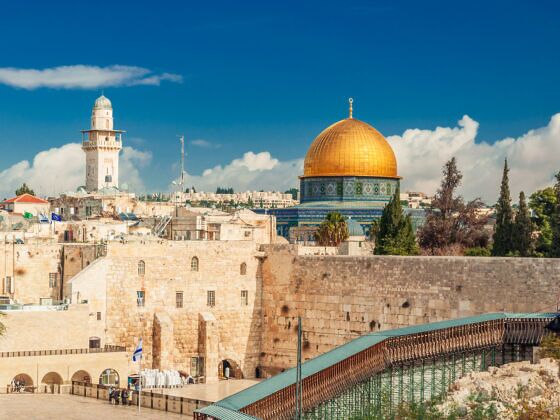
Walk Through 5,000 Years of Human History in Jerusalem’s Fully Accessible Old City
From this high point atop one of the world’s greatest and most important cities, it was impossible not to be overtaken by emotion – for the past five millennia, mankind’s expanding empires have conquered, coveted, bowed down at, or at least passed through right here.
The roughly 1-square-kilometer Old City of Jerusalem today is still surrounded by 2.5 miles of wall built most recently by the Ottomans. Its historic gates are still in place, and the public has access to the four quarters within: one each Armenian, Christian, Jewish, and Muslim.
Surrounding the Old City is a modern metropolis that retains its historic character through long-running institutions such as the Mahana Yehuda Market, which is home to vendors hawking produce, meats, and seafood alongside craft beer bars and places selling sushi.
Nowhere on Earth better represents what happens when very diverse cultures attempt to coexist. If you follow the news, you know it isn’t always easy. Still, the multicultural experience makes Jerusalem one of the most important places for a global traveler to visit and walk through the city’s 5,000 years of history.
What to see in Old Jerusalem: A self-guided walking tour
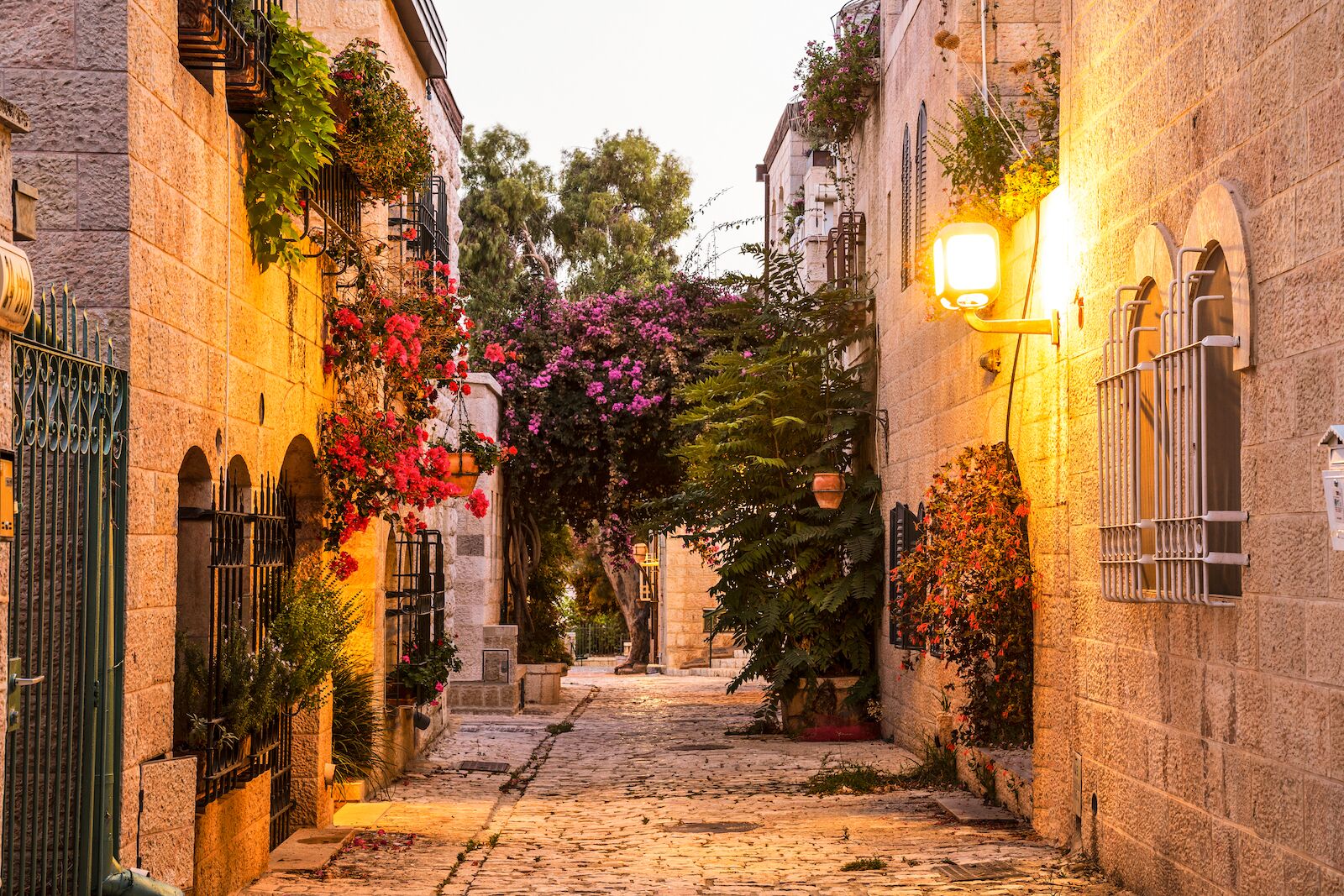
Photo: volkova natalia/Shutterstock
First settled around 3500 BCE, Jerusalem is a magnet that brings together human history, culture, and the future. It has seen a wide arc of human progress since then. It’s been attacked more than 50 times and has changed hands more than 20 times. The entire city was destroyed twice: first in the late 500s BCE, and again in 70 CE.
Current projects underway in Jerusalem, though, serve as a beacon for how historical cities can look forward. The Old City has recently undergone a massive accessibility project to make getting around easier for residents with disabilities and the roughly 10 million annual visitors. Bringing a project to life that has quite literally reformed the thoroughfares of an ancient city was no small task, and required adding wheelchair-accessible ramps to stone steps that date to a time before the wheelchair was created. You’ll see the results of these efforts – which brought politicians, lobbyists, shop owners, and residents across three religions and dozens of ethnicities together – as soon as you enter the Old City. Travelers with disabilities can download the Accessible JLM app to route their journey through the city.
Jaffa Gate provides the easiest, if busiest, access to Old Jerusalem. Don’t attempt to drive anywhere near the gate, as backlogged traffic comprised mostly of tour buses will eat half your morning. Instead, take the train to the Mamila/Karab station and walk up the slight incline to the gate into the Armenian Quarter (or have a driver drop you off at the bottom of the incline). Before proceeding, stop at the Jaffa Gate Tourist Office and grab a map to better understand your positioning.
From here, the Tower of David is just around the corner to the right, with the Christian Quarter ahead to the left. All that lies ahead can be a bit overwhelming at first, so the best way to start a day here is to walk the ramparts of Old Jerusalem from Jaffa Gate in the Christian Quarter to Dung Gate in the Jewish Quarter. For 16 NIS (Israeli New Shekel), which is about $5, you can ascend the ramparts and walk above the Old City. You’ll view each quarter’s markets and pass by schools and neighborhoods in the Muslim quarter, home to about 75 percent of the Old City’s 40,000 residents.
Stroll the Muslim Quarter first after walking the ramparts. Market vendors here sell everything from produce and baked goods to clothing and handmade gifts made of olive wood. A Palestinian filo pastry called mutabak is a delicious way to relieve yourself of a few shekels along the way.
Temple Mount is the holiest site in Judaism, and is also where Muslims believe Muhammed ascended to heaven. The Al-Aqsa Mosque, Islam’s second-largest place of worship, is visible here in more vivid detail than from the Mount of the Olives. Jews cannot pray directly atop Temple Mount, however, making its supporting Western Wall the holiest site accessible for followers.
Regardless of your faith, you can visit and touch the wall and can sign up for a guided tour of a portion of the wall that now lies underground in the Jewish Quarter. Nearby is the Wohl Museum of Archaeology, an underground museum that showcases Jerusalem from the time of King Herod the Great, between 37 BCE and 4 BCE.



Via Dolorosa, the main route leading into the Christian Quarter from the Muslim Quarter, leads to the holiest sites in this district. Walk the Stations of the Cross, concluding at the Church of the Holy Sepulchre. Recognized as the place where Jesus died after the crucifixion, the Rock of Cavalry is kept here encased in glass behind the Altar of Crucifixion. Christians line up to pray at the altar, with many also kneeling in prayer at the Stone of Anointing, near the entrance to the church, where it’s said that Jesus’s body was placed before he rose.
Cementing an often-repressed legacy of tolerance in Jerusalem’s old city is the fact that the keys to the Church of the Holy Sepulchre have been held by the Sunni Muslim Nusaybah family since the seventh century. Each day, the family fulfills its commitment to open, care for, and lock up one of Christianity’s holiest sites.
Walking through Old Jerusalem is enough to work up quite an appetite. In the market just outside the church, I ate the best hummus I had in Israel at a small cafe without a name and only a small white sign hanging above the light fixture near the entrance that reads Suq El-Khawajat. The cafe is busy with local residents. Come early, as the food is often sold out by 2 PM.
What to eat and see in Jerusalem outside of the Old City
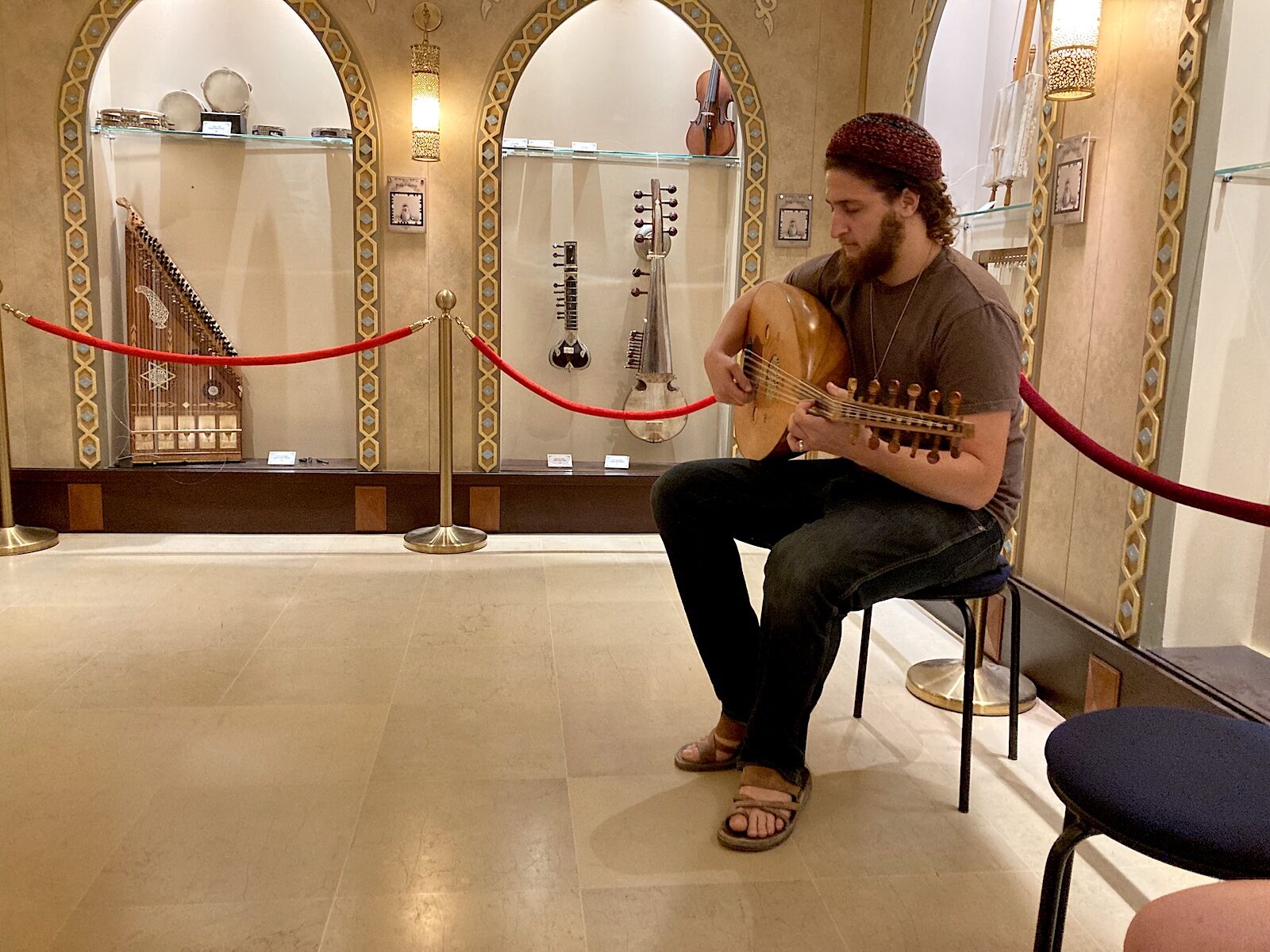
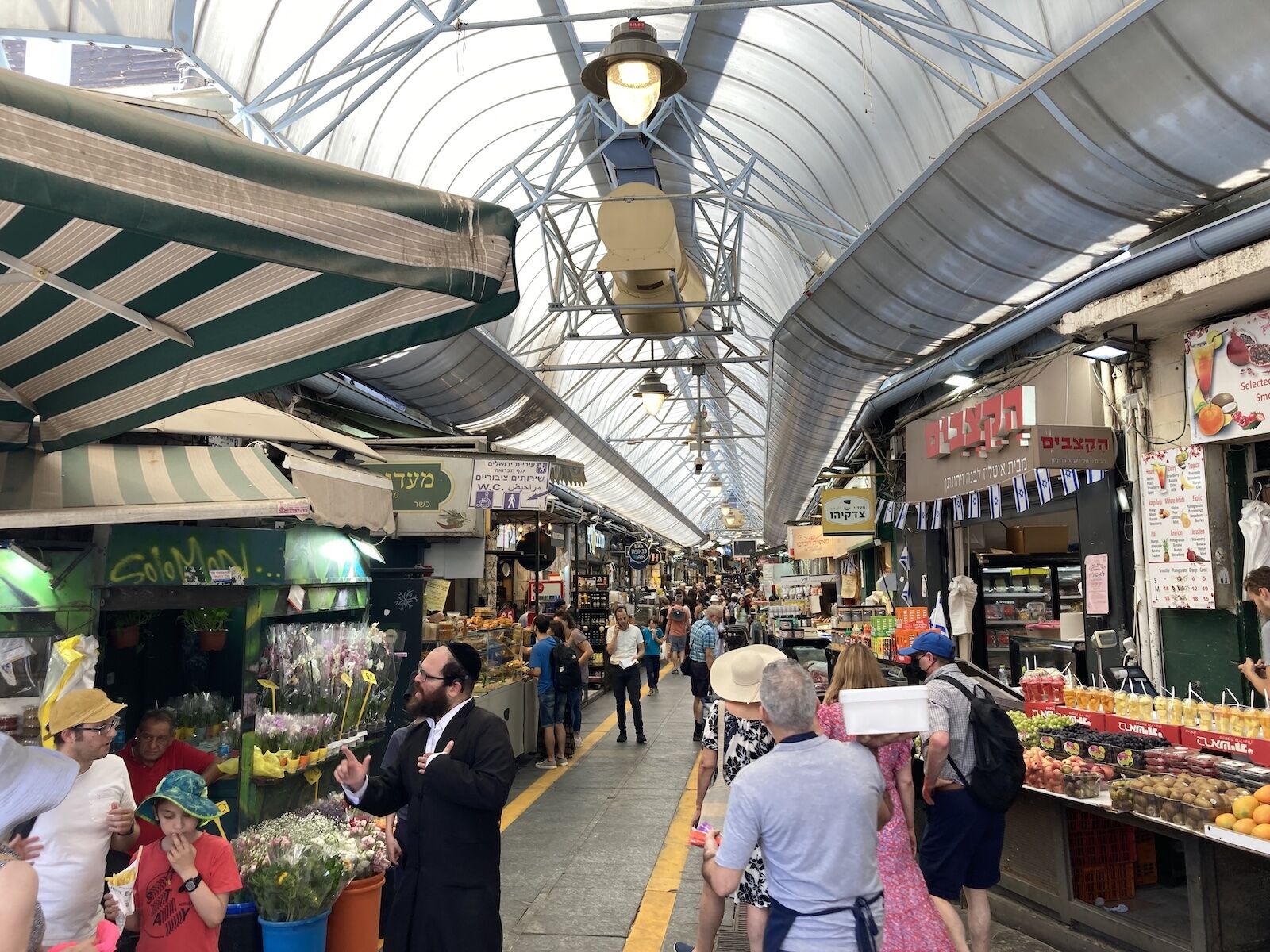
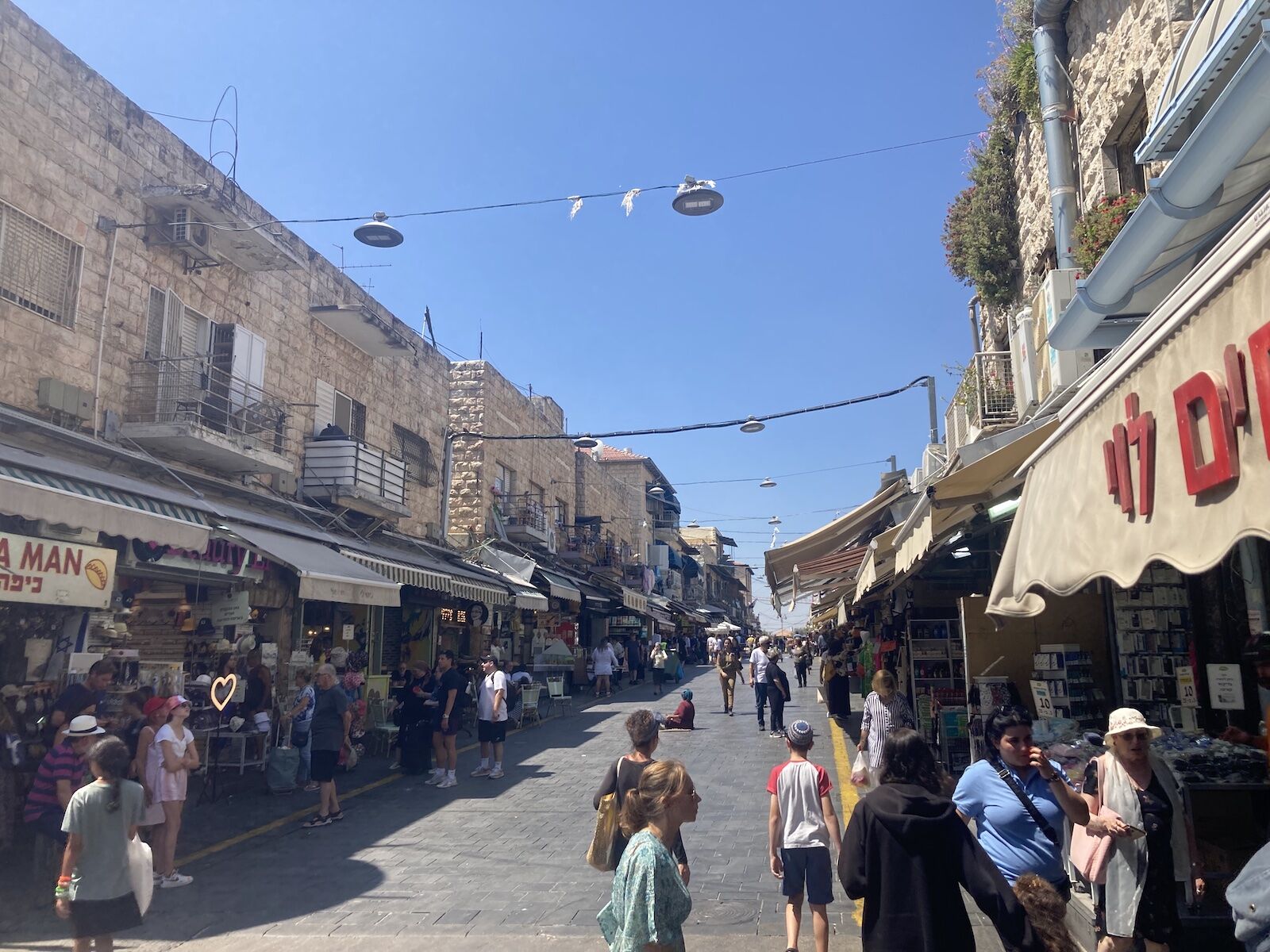


The Mahana Yehuda Market is worthy of a day itself, though I had a thorough experience in a couple of hours. The market first opened in 1887 and still houses several long-running produce and seafood vendors. These days, trendy cafes hawking foods from across the Middle East and beyond occupy most stalls. Two dishes stood out to me the most. First, a Yemenite dish called malawah I bought from Jachnun Bar that’s made with filo pastry stuffed with boiled egg, tahini, mashed tomatoes, and other veggies and spices to taste. Reminding me of a cross between deviled eggs and spanakopita, malawah became my favorite meal while in Israel. Second, the falafel pita sandwich from Falafel Brothers Levy, a perfect conglomeration of hummus, falafel, tomato salad, and French fries stuffed into a warm pita. Chased by a cold beer from BeerBazaar, and this easily qualified as my best market experience in the country.
At Azura in the market’s east end, the Kubbeh, a traditional Kurdish soup with meat-stuffed semolina dumplings, is the perfect reward for a full day of touring. Azura is the market’s oldest restaurant, and is a local favorite for its traditional gas-fired stovetop cooking.
Jerusalem redeveloped its historic train station, built in 1892 south of the Old City behind Yosef Navon Square, into a modern food hall and market. It’s aptly called The First Station. Artists and live music occupy the main center, adjacent to the rail tracks, with restaurants and boutique shops rounding out the offerings. Dinner at Adom inside the station proved to be an excellent casual dining experience where I enjoyed burrata, a sage pesto dish with caramelized carrots and beetroot, and a fresh halibut fillet.
Of course, there’s more to do in Jerusalem than eat (though one could very easily spend all of their time gorging on all that’s on offer). The Hebrew Music Museum, located just off Mikhal ha-Cohen Square, showcases traditional instruments and music of the region and offers intimate live performances throughout the day. Guided tours are available, or you can grab a tablet from check-in and stroll the two floors on your own.
The Israel Museum houses an outdoor art gallery and rotating exhibits, but the big draw here is the Shrine of the Book, which is an indoor gallery showcasing the earliest Biblical texts. Allow 30 minutes to peruse the Shrine’s rooms, and finish your visit to the museum at the Model of Jerusalem, a 1:50 scale recreation of the city from the time of Jesus, also known as the Second Temple Period.
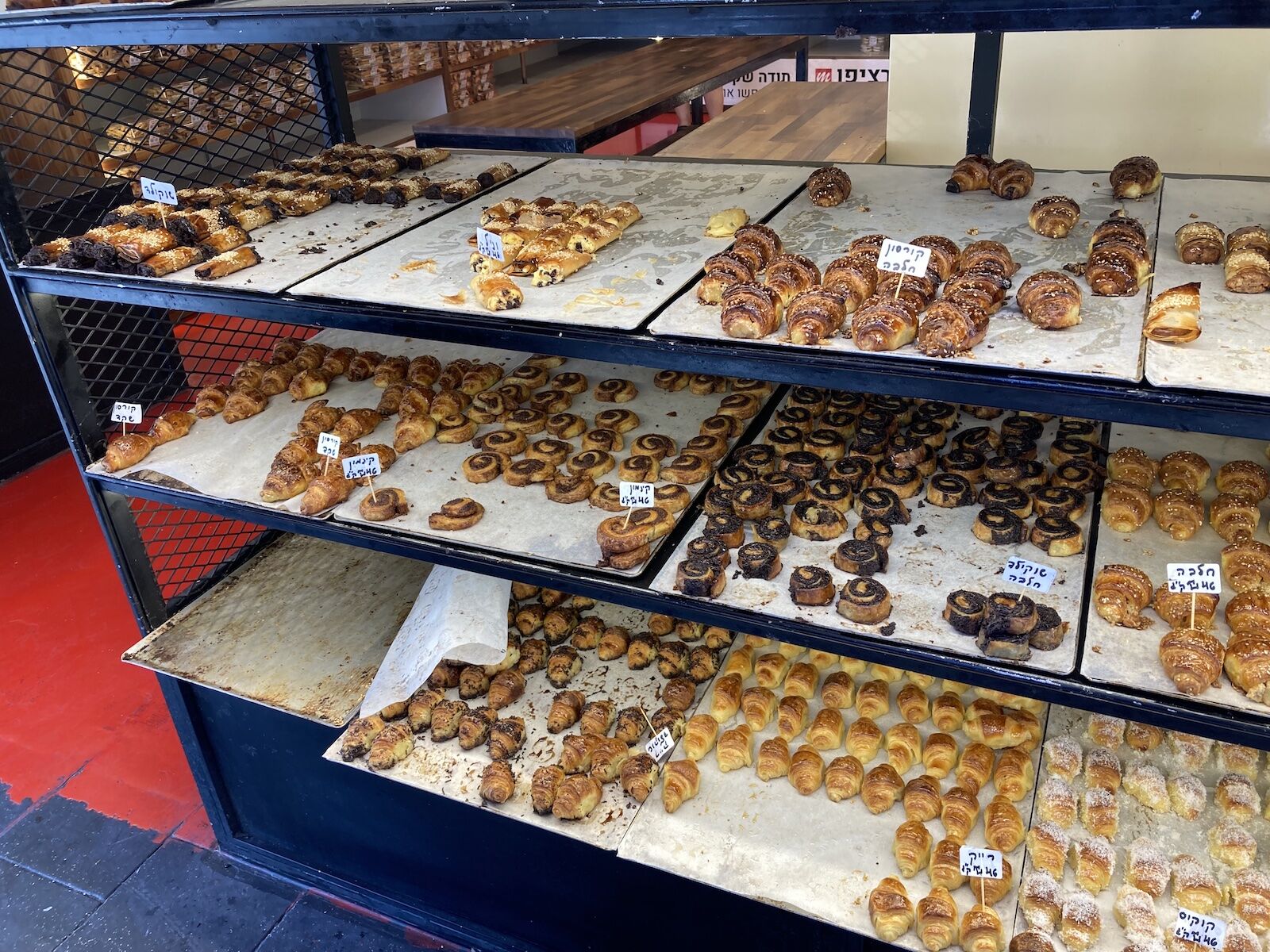


Where to stay and how to get around Jerusalem
If walking through the city’s history – and eating your fill along the way – is your primary goal in Jerusalem, stay close to the Old City but not too far from the central part of new Jerusalem. I stayed at the Dan Boutique Hotel, a well-trimmed but casual property with the best shakshouka of the trip as the staple on its breakfast buffet.
My fifth-floor room overlooked the Old City. The hotel is within walking distance of the First Train Station and a quick cab ride to the Mahana Yehuda Market. Its grand lobby made a comfortable place to post up on my laptop in the early mornings to go through emails and get a bit of work done. Lodging is available closer to and within the Old City, but the traffic – both foot and vehicular – is sure to prove a burden when it comes to getting anywhere beyond that area.
Taxis are ubiquitous here, and can be hailed or called by the front desk of your lodging property. A taxi is the best way to get to and from Ben Gurion Airport, which is about a 45-minute drive away. Public buses and light rail are a quick and efficient way to move about the city center, with a one-ride pass costing about $1.75.
Jerusalem is not a huge city – the population hovers around 1 million in the entire metro area – but it is quite dense. Most all tourist attractions are located within a 10-minute drive of one another, and many are walkable – including anything in and around the Old City. The density showcases what makes Jerusalem such a melting pot of cultures, as it’s possible all in one day to experience the city’s important past and catch a glimpse of what we can only hope will be a future built around acceptance and tolerance.